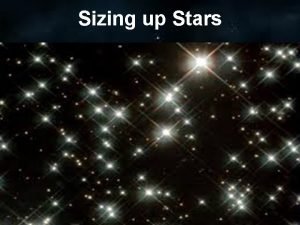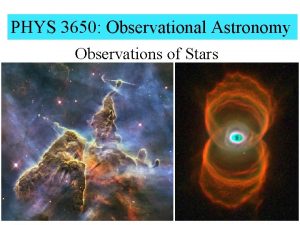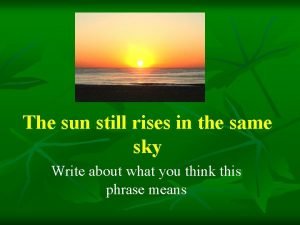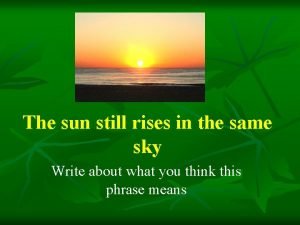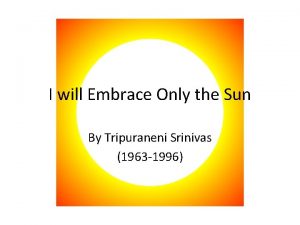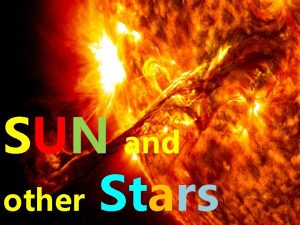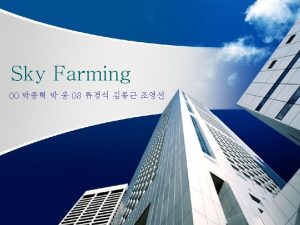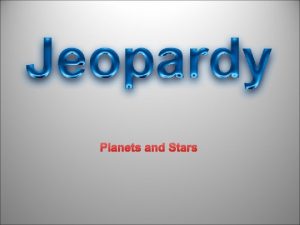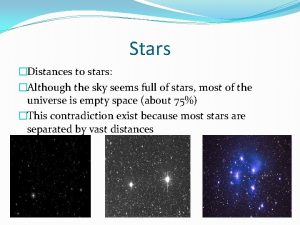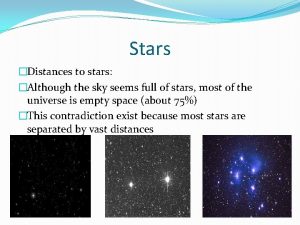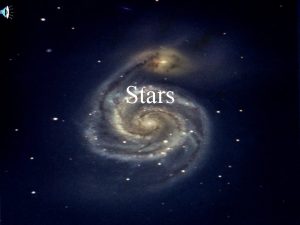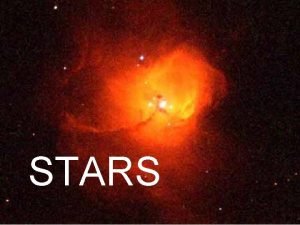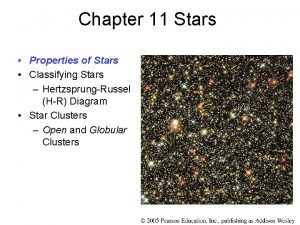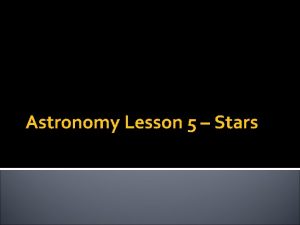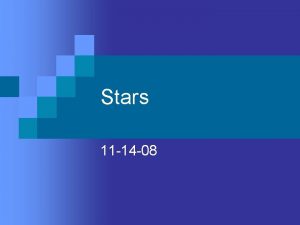SKY SCIENCE THE SUN AND STARS The Sun












- Slides: 12

SKY SCIENCE

THE SUN AND STARS • The Sun is the star at the centre of our solar system • Our sun is burning hydrogen at a rate of more than 1 million tonnes per second and turning that hydrogen into helium. By fusing the atoms together, the sun produces heat and light which radiate outward. • The surface temperature of the sun is about 5000°C. The Sun is a stable star and should have enough fuel to last another 4 -5 billion years. • Stars are the heat sources of the universe and come in all sizes, colors, compositions and temperatures. Student Booklet: Page 80, 79, 81

BLACK HOLES • Black Holes are stars with gravity so strong that nothing can escape from it, not even light! • Anything that passes close to the Black Hole will be sucked in and will never get out. • Black holes cannot actually be seen but astronomers can find them by looking indirectly. A black hole pulls in matter from nearby stars. As the matter disappears, it sends out strong bursts of x-rays. Astronomers can detect these xrays. Student Booklet: Page 82

THE MILKY WAY • Our Sun is one of about 200 billion stars in our galaxy – The Milky Way. • We can not see what our galaxy looks like, but astronomers use its size, mass, gravitational attraction to conclude that it is most likely similar to our closest neighbor the Andromeda galaxy. • The Milky Way is only one of billions of galaxies within the viewing range of the larger modern telescopes.

CONSTELLATIONS • Constellations are clusters of stars that form a picture. It’s like making a picture by connecting the dots. • Constellations get their names from Greek Mythology. • We can use constellations to help us locate special stars. • Since the Earth is tilted at 23. 5 degrees, we experience the seasons but also changes in which constellations we see. • Some constellations are seen year round which are known as circumpolar. For Ex. Ursa Major, Ursa Minor Student Booklet: Page 83, 80,

HOW DOES THE EARTH MOVE? How many of you think we are sitting still? • At this moment, the Earth is turning on its axis at approximately 1700 km/h • The Earth orbits the sun at over 100 000 km/h. Let’s Investigate! Student Booklet: Page 69, 70


SHADOWS

SHADOWS • They come in different sizes and shapes • They will only appear when there is light (Real or Artificial) • The size of shadows depends on the closeness of the source of light Check it Out Student Booklet: Page 92, 93

SOLAR SYSTEM Student Booklet: Page 74, 16, 15, 17, 18, 20, 19,

PHASES OF THE MOON

RESEARCH AWAY INTO SPACE… V e n u s Group 1 Group 2 Group 3 Group 4 Group 5 Group 6 Group 7 Group 8 J u p i t e r S M M N U E a a e e r a t r r p a r u s c t n t r u u u h n r n s y e X X X X Constellations Asteroids Comets X X X X X X
 The rwenzori mountains mary daniels is a student in england
The rwenzori mountains mary daniels is a student in england Big dipper
Big dipper The rime of the ancient mariner analysis stanza by stanza
The rime of the ancient mariner analysis stanza by stanza My favorite subject is biology
My favorite subject is biology What kind of star is the sun
What kind of star is the sun North star compared to sun
North star compared to sun The sun still rises in the same sky pdf
The sun still rises in the same sky pdf The sun still rises in the same sky
The sun still rises in the same sky What does the sun still rises in the same sky mean
What does the sun still rises in the same sky mean The wind whispered her name as it blew through the trees
The wind whispered her name as it blew through the trees Vray sun ozone
Vray sun ozone I will embrace only the sun line by line explanation
I will embrace only the sun line by line explanation Rapid change
Rapid change




